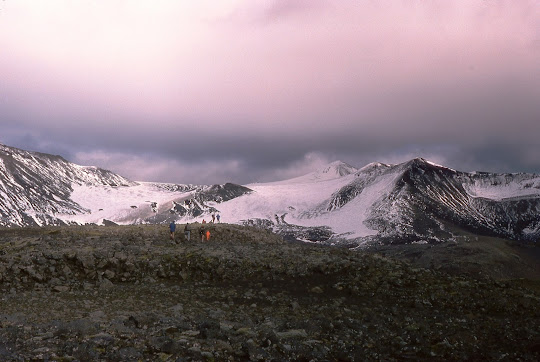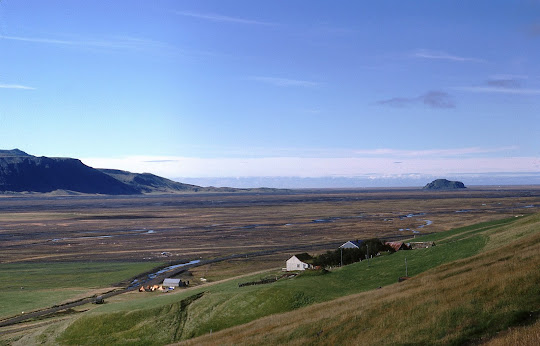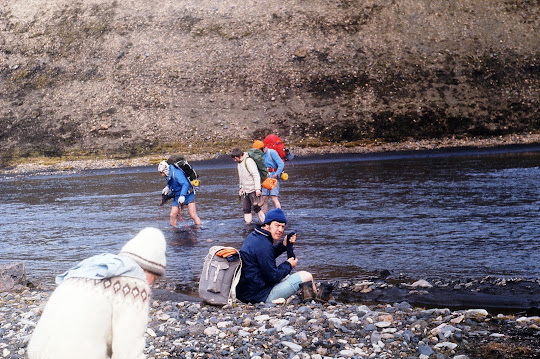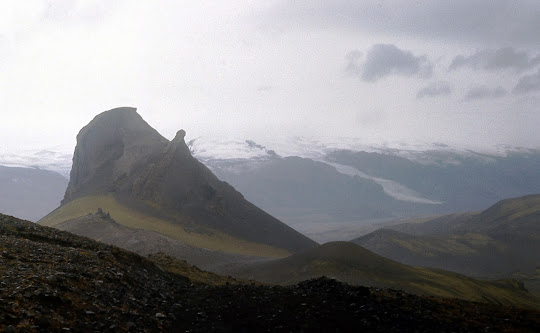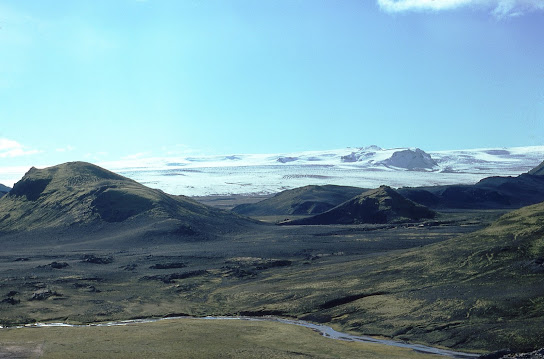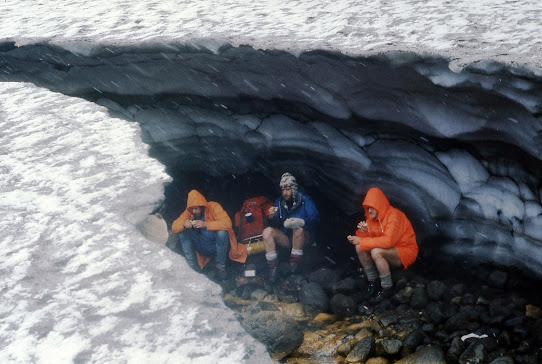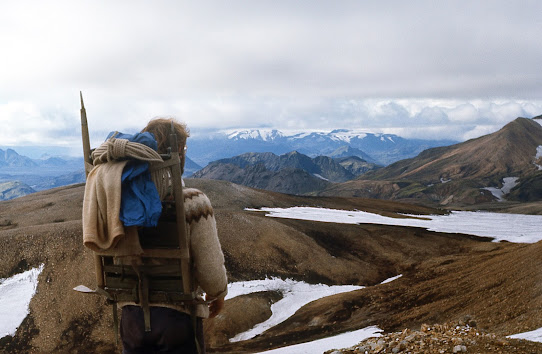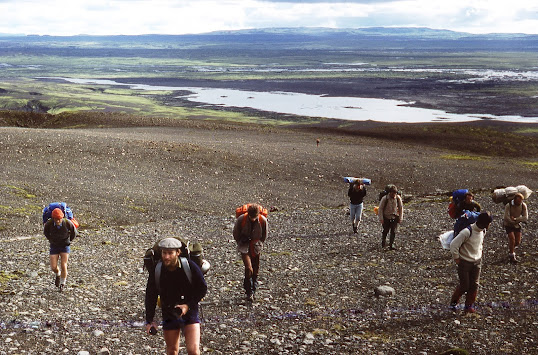links to: introduction and index - previous part
In transcribing this saga, I began to wonder what had happened to the people and places I encountered.
Iceland now seems increasingly geared up to the kind of tourist activities that extract money from punters at every twist and turn, such as sitting in warm pools sipping cocktails. And did I mention the penis museum? Staving off boredom! How I detest myself when I do these things. Wild walkers just don’t generate the same revenue.
Despite several distinctive names, there seems to be very little online about the others on the walk. I came across technical publications that may have been written by the landscape architect, one of the chemists and the medical researcher, although they could have been by others of the same name. The index of marriages on Ancestry suggests that the couple on the walk did not stay together, and that they may have married other spouses. That’s about it.
There is, however, quite a bit about the route and the tour organisers.
The Route
In 1977, the walks offered something of the wilderness experience Dick Phillips must have enjoyed in surveying the routes in the nineteen-sixties. Today, there are many more organised trips with motor support. One would have to go to the isolated interior, or to Greenland, to find places where other walkers are rare, where you might be the first to venture as the snow melts. Even so, satnavs and satellite phones remove much of the isolation.
Julia Bradbury’s
hour-long television programme about her 2010 Icelandic adventure (https://youtu.be/YGgWse3iQLA)
illustrates the difference. Caught in bad visibility in the mountains,
she calls in a support vehicle to take her to the next hut, almost a
stately home, and there takes a shower. Neither would not have been possible in 1977.
Most of the huts we used have now been replaced by buildings we would then have considered outrageously luxurious. They have wardens, bunks, showers, chemical toilets, cooking facilities, cutlery and crockery, and are reachable by ordinary car. There are also more of them, although not at Strutslaug where Dick Phillips’ remote hut was swept away by an avalanche around 1999.
Pictures of the Skaelingar hut (the one with the rock pillars) belonging to the Útivist Icelandic travel
association also show the difference (https://www.utivist.is/english/skaelingar-hut).
Below, their new hut is in the background, with one of the two we used
in the foreground. The other we used has gone, with the new hut, car park and
toilet shed in its place. Things can’t possibly be the same
without a shovel outside the door.
The Tour Organisers
Dick Phillips’ tours ran until around 2012, for
fifty-two years in total. I would guess that more than ten thousand
people went on one kind of tour or another over these years. In the
winter Dick lived at Nenthead near Alston in Cumbria, where, known to
all as ‘Icelandic Dick’, he was active in the local community. Among his
many roles he was a Councillor, newsletter editor and helped with the
Nenthead mines group. He was invariably to be seen riding a bicycle in
one of his distinctive Icelandic jumpers, and was buried in one in 2019.
He was in his mid-eighties. There are several tributes on the internet
(e.g. here and here).
Paul Stevens, the walk leader, was invited into partnership soon
after our trip, and remained with the business, leading walks until it
ended. A search reveals that, around 2005, he talked about his
experiences for the BBC Radio Stoke ‘Inside Lives’ project. A brief
synopsis is archived but the link to the recording no longer seems to
work
(http://www.bbc.co.uk/stoke/insidelives/2004/02/paul_stevens.shtml).
Paul and wife Judi are still involved with the Fljótsdalur hostel, which he talks about in a four-minute facebook video (https://fb.watch/8RA4SOHyWO/ - you may need to switch on the sound using the icon in the bottom right of the picture; the spelling in the subtitles is atrocious). It is good to see him looking well. Is that what a lifetime of walking with a heavy rucksack does for you? What a book he could write! The hostel facebook page is https://www.facebook.com/FljotsdalHostel/.
I bet they still have our real names in the visitors’ books. I am half-expecting a letter from their solicitor.
Finally, an elderly Dick Phillips appears at the beginning and end of this fifteen-minute video, not in any way the scary perfectionist I perceived in 1977. The scariness was my own inadequacy.
The main part of the video is about extreme mountain biking in Iceland,
and worth watching if you have fifteen minutes. That really is scary.

|
|
Horace and the Rough Stuff Fellowship: click image to play video |
(The video URL if the link doesn't work is: https://vimeo.com/98904694?fbclid=IwAR0yW2nRSTfiYKJq7rbYlevwi5j9ISS9SSbCOtrvk4wnXYWEmChrUFA3JRA)
The end.
Some names and personal details have been changed. I would be delighted to hear from anyone who was there.









